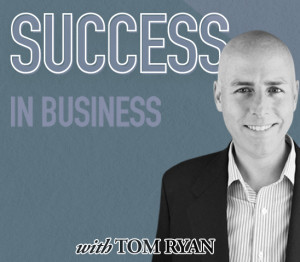 We’ve all heard the stats about business failure. According to some fairly reliable sources, as many as 8 in 10 businesses will fail within the first 18 months. But that statistic doesn’t tell the whole story. Many of those businesses were doomed to fail long before they ever opened their doors. Why? Their founders had no idea how the business was actually going to make a profit.
We’ve all heard the stats about business failure. According to some fairly reliable sources, as many as 8 in 10 businesses will fail within the first 18 months. But that statistic doesn’t tell the whole story. Many of those businesses were doomed to fail long before they ever opened their doors. Why? Their founders had no idea how the business was actually going to make a profit.
In my last post, I stressed just how important the financials are when planning a new business. The better your understanding of your path-to-profitability, the easier it is to both communicate and implement that plan. The better your co-founders, partners and employees understand how the business is supposed to make money, the easier it is for them to meaningfully contribute to that goal. Having a clear financial plan in place also makes fundraising much easier, as it demonstrates how you will actually make your investors money — or at the very least pay them back.
Where do you start? For my money, there’s no better place than with a financial model. My wife often teases me that I live in a fantasy world created entirely by Excel spreadsheets. She’s not wrong. I love being able to build a detailed financial plan, and using these great tools to solve problems. At the same time, I realize that not everyone gets quite as excited by columns and rows as I do.
To create a great financial plan that demonstrates your path to profitability, you don’t need to be a financial wizard. Most entrepreneurs are not born to be masters at creating income statements, cash flow documents and balance sheets. All you need is the ability to think practically about how your business is actually going to make money, and the willingness to keep track of the details as you go.
Let’s start with a few key principles.
1. Cash is King: We’ve all heard the phrase “Cash is king.” It’s an expression that’s a part of our cultural lexicon, and for a good reason. If you don’t have cash flow, you can’t pay your bills. If you can’t pay your bills, it’s only a matter of time before you’re out of business. This means being willing and able to sell your products or services, and being able to grow your customer base to bring in new streams of cash. If your financial plan only works when outside cash is injected by investors, you have a problem.
2. Cash flow and profitability are not the same thing: You can be a cash-poor company and still be profitable. Particularly when you’re just starting out, it’s important to remember this point. You may temporarily have negative cash flow due to startup costs, for instance. At the same time, a business can also go through periods of being flush with cash, and yet still have a fundamentally unprofitable financial model.
3. Know your price points: As you begin to sketch in the details of your financial model, there’s a big question you need to answer. How much are you going to charge for your products or services? Are those prices realistic? Testing your prices can help you gain a good understanding of what the market thinks they’re worth.
4. Know how much your products or services costs you: Profit can seem like a pretty simple equation. Subtract the amount something costs you from the amount you can sell it for, and that’s your profit. Sometimes this is easy, like the cost of materials and time it takes to make a physical item for sale. Other times, like almost anything in the knowledge-based services such as writing, design or programming, those costs are less obvious. Things like fees, taxes, customer acquisition costs, subcontractors, and shipping are also a part of your costs. These details can be easily overlooked, and will cut into your profits if you don’t account for them.
5. Know how much will it cost to run the business: What do you have to pay for, regardless of whether you sell anything or not? Your landlord doesn’t care how many products you sell, they just want you to pay your rent. Your employees also need to be paid, as does the power bill. By adding up all of these costs, and then dividing it in a per-product/service basis, you can start to see what remains in terms of actual profit.
There are plenty of other factors, like taxes, legal costs, and things like depreciation and amortization that will play a role in your overall profitability. These considerations are important, but they can wait. For the moment, we’re just interested in knowing if financial model clearly shows a path towards profitability.
The end goal here is always to have a profitable, cash-flow positive business. After you’ve run all the numbers, does it look like the product you’re selling for $50 will ultimately only cost you $40? If so, that $10-per-unit profit make sense for your goals? If it doesn’t make sense on this fundamental level, something in your plan needs to change.
